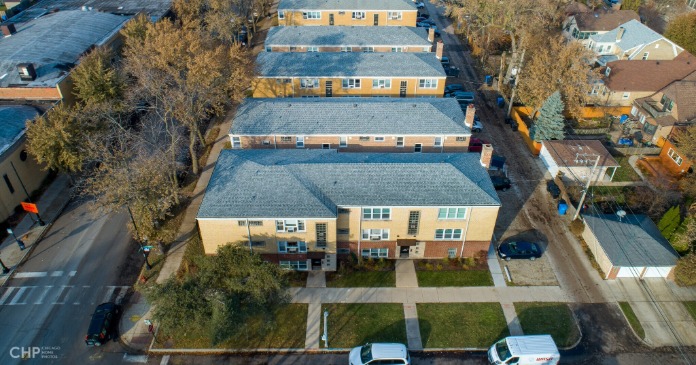
I recently attended the Austrian Economics Research Conference, which is held annually at the Mises Institute on the campus of Auburn University.
After an inspiring day of presentations, I began my trek back to the Auburn University Hotel. As I made my way down the sidewalk, I found myself walking along a well-trodden dirt path. Soon enough I was back on the sidewalk, and I turned around, quickly realizing I had taken the “wrong” path.
The correct one entailed taking a sharp left turn, walking up a set of stairs, and then continuing along the sidewalk at the top. This path seemed rather unintuitive, however.
Why would I walk up a flight of stairs when I could simply continue walking in a straight line, all to ultimately end up in the same place? I came to a realization: I didn’t take the “wrong” path, and neither did the countless individuals who came before me (hence the already-existing illicit stretch of dirt.) It was, rather, the bureaucratic urban planners who had erred.
These so-called “desire paths” exist as an everyday testament to the flaws of central planning. They are a visual indication of the spontaneous order that occurs when individuals are allowed the freedom to choose their own way.
Conversely, the lesser-traveled, bureaucratically designed sidewalks attest to the inherent flaw in any form of central planning: the inability of bureaucrats to rationally account for the actual preferences of the individual members of a given society.
Fortunately, the case of the urban planner in this context is not one of such great consequence as that of the planner of an entire nation’s economy, yet both planners do suffer the same pitfall. But this is not to say that the case of the urban planner is without any consequence whatsoever.
Even a misplaced sidewalk exacts a cost on taxpayers, who would otherwise prefer that one be constructed where they actually care to walk.
An unintuitive sidewalk with an unnecessary staircase is one thing, but what about a more complex case such as, for example, a central planner who is responsible for directing all fashion design and manufacturing within a nation? It becomes almost immediately apparent that the multitude of preferences different individuals have regarding what they wear would make this an insurmountable task.
Should skinny jeans or bootcut jeans be produced, and in what quantities? What about shirts? What is the proper ratio of flannels to turtlenecks to hoodies? Do people even want to wear turtlenecks? Additionally, you can probably say goodbye to accessories, for those are excessive and unnecessary.
In fact, why not just standardize clothing as much as possible to save the central planner all this undue trouble? There is also the issue of actually producing the clothing. What materials are cost effective? Should the clothing they decide to produce be made from cotton, polyester, silk, chainmail, or something else?
Obviously the central planner can employ some basic reasoning to conclude it is probably inefficient to produce full suits of plate armor for every citizen to wear daily, but there are still countless factors that cannot be rationally accounted for due to the lack of a proper pricing mechanism.
Without naturally-forming prices in the market, the central planner must resort to other means. In place of voluntary exchange between individuals in the marketplace, the central planner extracts wealth by means of coercive taxation. Rather than leaving private enterprise to its own devices—resulting in sidewalks, clothing, and all other economic goods being properly allocated according to the preferences of individual consumers by way of the pricing mechanism—the central planner is forced to estimate these preferences, and then fund their fulfillment using confiscated tax dollars.
Production, therefore, can only be carried out by edict, absent properly formulated prices. Thus, the crux of the issue: “…every economic change becomes an undertaking whose success can be neither appraised in advance nor later retrospectively determined. There is only groping in the dark.” (Economic Calculation in the Socialist Commonwealth, Ludwig von Mises)
Let us now return to the case of the urban planner. When designing the sidewalks, the planner likely already has a good idea of where people tend to walk. His task is simple, then: just build the sidewalks where people are already walking. But for one reason or another, this doesn’t transpire. Why?
Perhaps the aesthetic preferences of the planner result in an unnecessary but more “visually pleasing” staircase being built here and there. Perhaps there exists some bureaucratic requirement that the sidewalks be built in some particular manner.
Perhaps the planner simply thinks “the community is wrong! They tend to walk this way, but my way is better!” Regardless of the particular reasons the urban planner errs, the result is the same. Some cities end up more walkable than others, but almost anywhere you look (if you pay enough attention) you can spot these “desire paths.”
If the construction of sidewalks was left to the market, it is far less likely that this would be the case. Property owners would have an incentive to coordinate their efforts to build sidewalks that would appease the members of their communities. Business owners would want people to have easy access to their buildings, and would recognize the value consumers place on having walkable streets.
Satisfying this end would likely result in higher profits for the business owners. Thus, in efforts to keep people satisfied—just as individuals walk in a particular manner to get to their destinations efficiently—property owners along high foot-traffic areas would tend to construct sidewalks that facilitate efficient travel for members of their communities. One way this could be done, for example, would be waiting for desire paths to form and then building sidewalks over the worn trails.
This would result in higher satisfaction for the community as a whole, as it aligns the sidewalk production of the property owners with the sidewalk wants of the members of the community.
As stated previously, poorly designed sidewalks are probably less likely to cause economic armageddon than some other full-fledged centrally planned industries would be, such as automobiles, food, pharmaceuticals, or technology.
The underlying principle, however, is the same: central planning is the path to economic ruin because goods are not exchanged on a voluntary, mutually beneficial basis. Rather, they are funded by expropriated wealth, produced based on the necessarily arbitrary whims of bureaucrats, and distributed with the special interests of said bureaucrats in mind.
To avoid economic catastrophe, it is essential—not in the production of some or even most goods, but in the production of all goods —to allow private enterprise to perform its function: efficiently allocating resources to their most value-productive ends.
Any other arrangement necessarily stunts and destroys wealth. Voluntary, mutually beneficial exchange creates it—no matter the industry.














